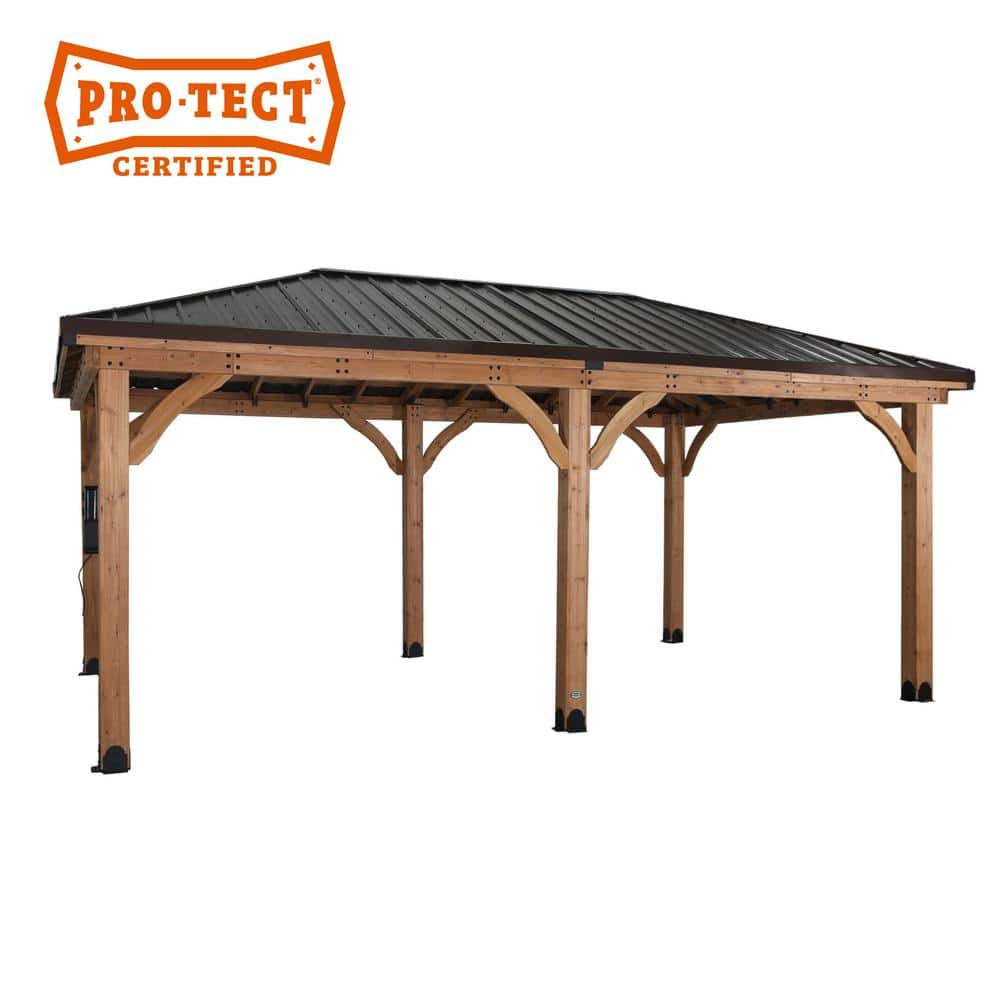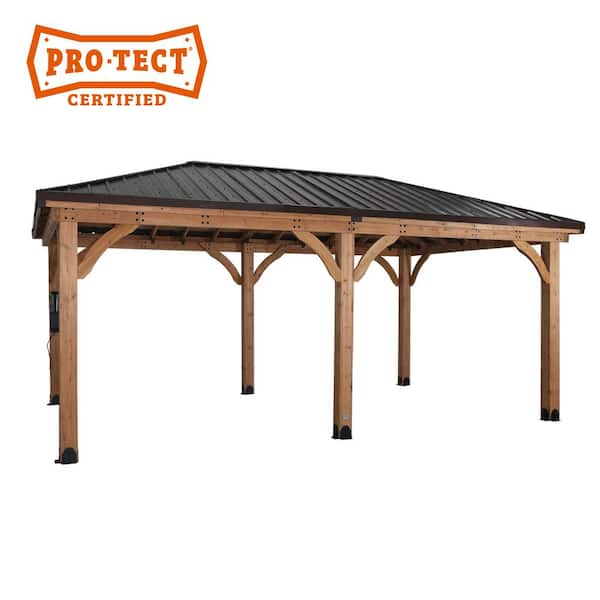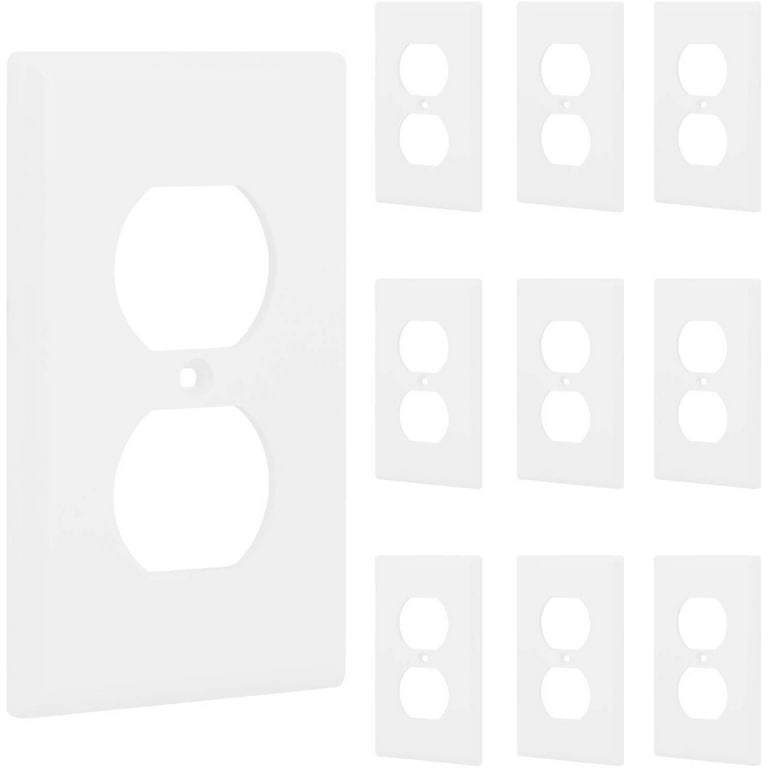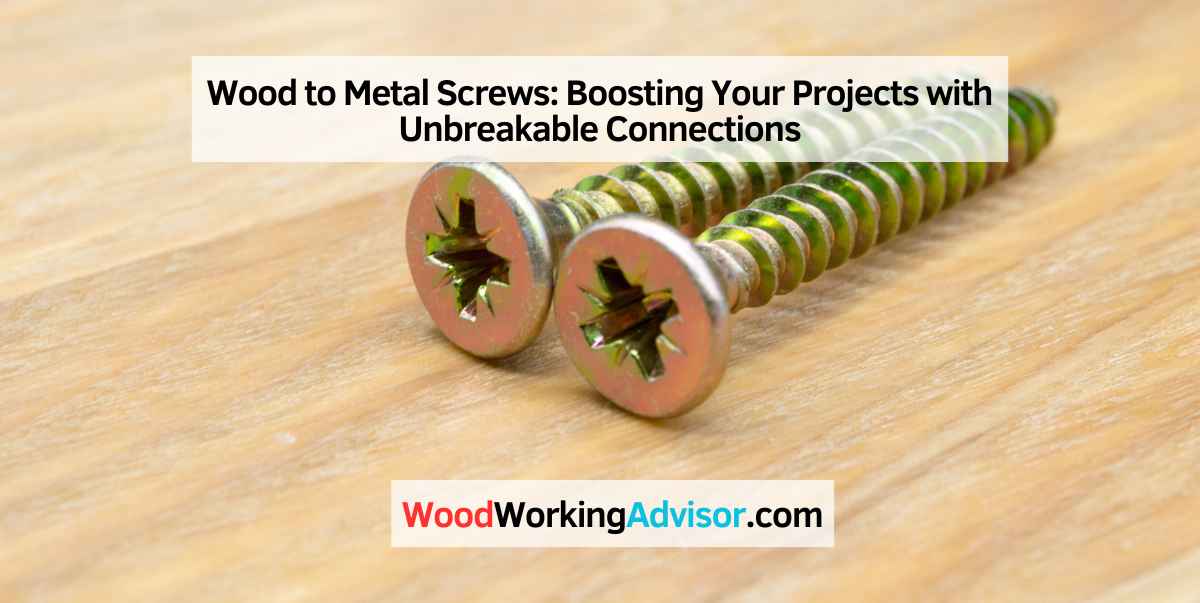Wood to metal screws are specifically designed for joining wood to metal surfaces securely. These screws have a sharp, self-tapping point and a unique thread design to provide maximum grip and stability when fastening wood to metal.
Wood to metal screws are an essential hardware for construction and woodworking projects, offering a reliable and durable solution for connecting wood and metal materials. These specialized screws are engineered to withstand the challenges of working with different materials, ensuring a strong and lasting bond between wood and metal components.
Whether you are building furniture, installing fixtures, or constructing metal-framed structures, using the right wood to metal screws is crucial for ensuring the structural integrity and longevity of your projects. In this comprehensive guide, we’ll explore the features, applications, and benefits of wood to metal screws, helping you make informed decisions for your specific fastening needs.

Credit: www.homedepot.com
Evolution Of Screws
Screws have been an essential fastening tool since ancient times, with their design continuously evolving to meet the demands of various construction applications. These innovations have led to the development of wood to metal screws, which have significantly improved the stability and durability of structural assemblies.
From Wood To Metal
Originally, screws were primarily designed for use in wood applications, offering reliable fastening solutions for carpentry and woodworking projects. However, with the advancement of technology and increasing demands for robust fasteners, metal screws emerged as a more durable and versatile alternative.
Advantages Of Metal Screws
Metal screws offer numerous advantages over traditional wood screws, making them an ideal choice for a wide range of applications. Some of the key benefits of metal screws include:
- Greater tensile strength and resistance to shearing forces
- Enhanced corrosion resistance, ideal for outdoor and marine applications
- Compatibility with a variety of materials, including metal, plastic, and composite surfaces
- Potential for self-drilling and tapping capabilities, reducing installation time and effort
- Availability in various head styles and drive types for specific application requirements
Types Of Screws
When it comes to fastening materials together, screws are an essential hardware item. There are various types of screws designed for specific applications, each with unique features and functions. Let’s take a closer look at wood screws, metal screws, and specialized screws for projects.
Wood Screws
Wood screws are specifically designed for use in wood. These screws have coarse threads and a sharp point, allowing them to grip the wood securely without the need for pre-drilling. They come in various sizes and lengths to accommodate different wood thicknesses and applications. With their deep threading, wood screws create a strong hold in wood materials, making them ideal for woodworking and construction projects.
Metal Screws
Metal screws are tailored for fastening metal materials together. They typically have finer threads compared to wood screws, providing a secure grip on metal surfaces. Some metal screws are self-drilling, eliminating the need for pre-drilling holes in metal. They come in a range of head styles, including pan head, flat head, and round head, to suit various applications. Metal screws are commonly used in automotive, manufacturing, and sheet metal fabrication applications.
Specialized Screws For Projects
Specialized screws cater to specific project requirements. For instance, there are concrete screws designed for fastening materials to concrete or masonry, deck screws for outdoor applications, and drywall screws tailored for attaching drywall to studs. These specialized screws are engineered with unique features to ensure optimal performance in their designated applications, making them indispensable for specialized projects.
Choosing The Right Screw
When it comes to Wood to Metal Screws, selecting the right screw is crucial for a successful project. Below are key considerations to keep in mind:
Considerations For Material
Choose a screw that matches the materials you are joining to ensure a secure connection.
Size And Length Matters
Select the appropriate size and length based on the thickness of the materials being fastened.
Understanding Thread Types
Be aware of different thread types like coarse threads for wood and fine threads for metal for optimal performance.

Credit: www.homedepot.com
Enhancing Project Durability
When it comes to completing any woodworking or metalworking project, ensuring its long-term durability is of utmost importance. One key aspect that contributes to project longevity is the choice of fasteners. And when you need a strong and reliable connection, wood to metal screws serve as the perfect solution. In this section, we will explore the benefits of metal screws and how they can significantly enhance the structural integrity of your projects.
Benefits Of Metal Screws
Metal screws offer a wide range of benefits that make them the preferred choice for securing wood and metal materials together. Let’s take a closer look at some of these advantages:
- Superior Strength: Metal screws are designed to provide exceptional strength and resistance, ensuring a secure and long-lasting connection. Their superior tensile and shear strength make them more reliable compared to traditional screws.
- Improved Corrosion Resistance: Metal screws are often coated with protective finishes, such as zinc or stainless steel, to enhance their resistance to corrosion. This protective layer keeps the screws intact even in harsh environmental conditions, preventing rust and deterioration.
- Easy Installation: With their sharp and pointed threads, metal screws penetrate wood and metal surfaces effortlessly. This ease of installation not only saves time but also reduces the risks of splitting or damaging the materials.
- Versatility: Metal screws come in various shapes and sizes, allowing them to be used for a wide range of applications. Whether you are working on furniture, cabinets, or metal structures, these screws can accommodate different thicknesses and materials.
Improving Structural Integrity
Choosing wood to metal screws can significantly enhance the structural integrity of your projects. Here’s how:
- Secure Connections: Metal screws create a tight and secure connection between wood and metal, minimizing the risk of loosening or separation over time. This ensures the overall stability of your project, which is especially crucial for load-bearing structures.
- Reduces Flexibility: The strong grip provided by metal screws reduces the flexibility of the joint, preventing unnecessary movement or shifting. This rigidity enhances the structural stability, making your project more resistant to stress and external forces.
- Longevity: By using metal screws, you can increase the lifespan of your projects. The reliable and durable connection they provide ensures that your wood and metal components remain securely fastened together, even under heavy loads or constant usage.
In conclusion, utilizing wood to metal screws offers numerous advantages that can greatly enhance the durability of your projects. From superior strength and corrosion resistance to improved structural integrity and longevity, these screws are an indispensable addition to any woodworking or metalworking endeavor. So, make the wise choice and opt for metal screws for your next project to ensure its long-term stability and strength.
Tips For Successful Screwing
When it comes to fastening wood and metal together, using wood to metal screws is a reliable and efficient method. However, to ensure a successful and durable connection, it is important to follow some essential tips. In this section, we will explore some valuable insights on how to achieve successful screwing for your woodworking projects. Let’s dive in!
Pre-drilling Techniques
Before driving a wood to metal screw, it is crucial to pre-drill pilot holes in both the wood and metal surfaces. This helps prevent the screw from splitting the wood or breaking off in the metal, ensuring a secure and strong connection. The size of the pilot hole should be slightly smaller than the diameter of the screw, allowing for easier driving without compromising the structural integrity of the materials.
When pre-drilling, take care to align the hole in the wood with the hole in the metal to ensure both surfaces are properly joined together. You can use a drill press or a handheld drill with a bit specifically designed for metal and wood applications. Remember to remove any wood or metal debris from the holes after drilling to ensure a smooth and clean fit for the screw.
Tightening Without Stripping
Properly tightening wood to metal screws is essential for a secure and long-lasting connection. However, it is important to avoid over-tightening, as this can lead to the stripping of either the screw or the material being fastened. To prevent stripping, it is recommended to use a manual screwdriver or a low-torque setting on a power drill to drive the screw into place.
When tightening the screw, apply steady and even pressure, making sure not to force it too much. If you encounter resistance, stop and assess the situation. It could indicate that the pilot hole needs to be adjusted or that the screw is not compatible with the materials being joined. Taking a moment to troubleshoot and make necessary adjustments will help prevent stripping and ensure a successful screwing experience.
Maintenance And Care
Once the wood to metal screws are in place, it is important to regularly inspect and maintain the connection. Over time, wood may naturally expand or contract, while the metal can be susceptible to corrosion or rust. To ensure the longevity of your screwed joints, periodically check for any signs of loosening or damage.
If you notice any issues, such as loose screws or corrosion, it is essential to address them promptly. Tighten loose screws and consider applying a protective coating or sealant to the metal surface to prevent further corrosion. By performing proper maintenance and care, you can extend the lifespan of your wood to metal screwed connections and maintain the strength and integrity of your projects.

Credit: www.walmart.com
Frequently Asked Questions For Wood To Metal Screws
What Screws Are Best For Wood To Metal?
Opt for self-drilling screws for attaching wood to metal for best results. These screws have a sharp point and do not require pre-drilling holes in the metal.
What Screws Go Through Wood And Into Metal?
Wood screws with sharp, self-tapping points and coarse threads are suitable for fastening wood to metal. They grip the wood tightly and easily penetrate the metal. Use screws specifically designed for this purpose for secure and reliable connections.
Can You Screw Wood Onto Metal?
Yes, you can screw wood onto metal using self-tapping screws or drill guide holes. This creates a strong and secure connection.
What Screws To Use For Wood To Metal Studs?
Use self-tapping screws for wood to metal studs for secure attachment and ease of installation. Match screw length to material thickness.
Conclusion
Choosing between wood and metal screws depends on the project’s specific needs. Understanding the differences enables secure and durable fastening solutions. Finding the right type of screw tailors the application to ensure long-lasting results. Trust the appropriate screw type for a successful project outcome.


